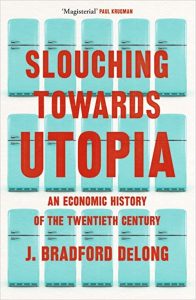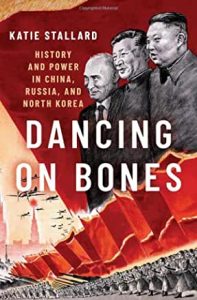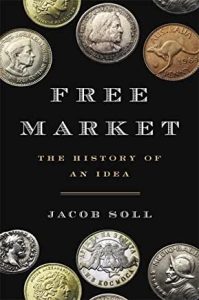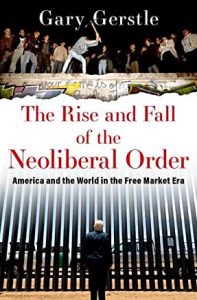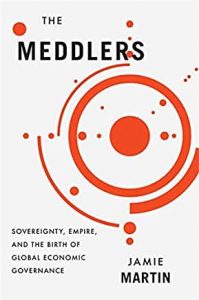Like many people, I’ve been eagerly anticipating Brad Delong’s Slouching Towards Utopia: An Economic History of the 20th Century, and it doesn’t disappoint. Brad was a couple of years behind me in the Harvard graduate economics programme, was an early adopter of blogging, and has been a prominent online presence ever since. So his argument in one sense is no surprise, but it comes together as an unmissable book, even for a devoted reader of his tweets.
The book starts by framing the central point: the economy, and people’s lives, have been utterly transformed by the long 20th century of 1870ish to around 2010 in a continuous tide of change both ‘marvelous and terrible’. During that long 140 year century, the average economic growth rate (we are US/west focused here) was just over 2% a year, before and since, below 0.5% a year. Income levels doubled every 33 years during that period: “A revolutionized economy every generation cannot but revolutionize society and politics, and a government trying to cope with such repeated revolutions cannot but be stressed in its attempts to manage and provide for its people in the storms.” We’re now back down to doubling about every 150 years, which actually seems just as stressful for governments given the expectations of the previous four or five generations.
The structure of the book is then (unsurprisingly) chronological. It begins with the first era of globalization, between 1870 and 1914, when the key global flow was people: a hundred million people migrated across national borders. Governments embraced openness of all kinds, though, and there were revolutionary declines in transport costs. The 1870 launch of RMS Oceanic, an iron-hulled steam-powered passenger ship, cut travel time across the atlantic from a month to nine days and 3rd class fares opened the journey to all but the very poorest Europeans. The vast waves of migration helped make the US the dominant economic power of the 20th century.
The book moves on to the economy of empires in the first part of the 20th century. The mechanization of industry in the imperial North turned the colonized South into an economic periphery, exporting raw commodities and importing manufactures. These were, “Unable to build communities of engineering practice that might provide a path to greater, industrial, riches.” Their labour force was not literate in sufficient numbers, there wasn’t enough financial capital to invest in factories.
World War I and the Depression follow, and the narrative traces two currents of thought shaping post-1918 outcomes. During this period there was no hegemon – only the US could have been, given the weakness of post-war Britain, and it rejected that role as provider of global public goods such as financial stability for all. So the ideas of a return to an 1870-1914 liberal market order competed with ideas focused on social rights and relationships. Economists broadly fell into camps – this was the era of the socialist calculation debate – but policy elites in the West doubled down on austerity.
On we go to Russia and socialism in practice, and the brutality of Leninist and Stalinist economics: “Of the 1800 delegates to the 17th Congress in 1934, fewer than one in 10 went on to be delegates to the 18th Congress in 1939.” The rest were dead or in Siberia, while forced collectivization spread famine and death. Fascism and Nazism deformed much of the rest of Europe in the 1930s, and then came the catclysm of the second world war and Holocaust. As the chapter points out, not everyone shed their opposition to the bundle of policies that could be characterized as fascist. Some Hayekians in the 1980s, such as supporters of Pinochet, found their contrast with socialism appealing. (Mrs Thatcher gets a favourable passing mention as a firm opponent of the methods, even as she approved of the libertarian economics.)
World War II gives way to the Cold War in this sobering march of 20th century history, while the spillovers from Cold War led to many false developmental starts in the Global South – alongside the amazing successes of development in some East Asian countries. The book sees the contrast as one between the aim of self-sufficiency in Latin America and countries in the Soviet orbit versus the assumption of the need to survive in export markets in East Asia – the latter had no great powers pouring in resources, or interfering and advising.
The only bright spot in this long century appears to be les trentes glorieuses, the three post-war decades of social democracy. What was their magic? A high rate of investment. Full employment but no upward wage pressure as there remained (in most of Europe) and under-employed agricultural labour force to pull in. Steady growth in industries that reached their technological maturity in that era, enabling the location of industrial production to spread to more places.
But it didn’t last. The redistribution of social democracies came into increasing tension with the conditions for innovation and growth. The logic of how governments operate differs from the logic of efficient production, so nationalized industries became wasteful and ineffective. Sometimes only moderate efficiency is fine, or indeed welcome, but there are limits. In 1979 we saw the neoliberal turn. Why so? “In my view the greatest cause was the extraordinary pace of rising prosperity during the Thiry Glorious Years, which raised the bar that a political-economic order had to surpass in order to generate broad acceptance.” people had come to expect rapidly rising incomes and broad equality of outcome, and high employment and low inflation. If this stability stumbled, the order had to change.
So the book ends with the political success of the neoliberal order – winning the Cold War – and its economic failure. And here we are. We haven’t reached utopia but living standards are massively higher than in 1870. It hasn’t been a smooth course – far from it – a slouch rather than a march. But people are so much better off than the mass of humanity before the long 20th century.
The strength of the book – as well as its immense scope and depth (more than 500 pages) is that it’s a work of political economy, braiding the different strands of ideas, Hayek, Polanyi and Keynes. Although what it ignores (and fair enough) is the series of technologica revolutions. In addition, there are plenty of pleasing asides and details. Humans love narratives, so, “The secret weapon of the economist is the ability to count.” Or, “Contests and gift exchanges have more psychological resonance. It is more satisfying to receive (or give) a present or to win a prize than to buy the exact same thing…. By ignoring and trying to suppress these dimensions – to require that everything pass through a cash nexus – the market society dehumanizes much of life.” I like that it doesn’t claim there are easy lessons from the history, but insists that there are indeed subtler lessons. Definitely one to read – or pre-order: out on 15 September.
